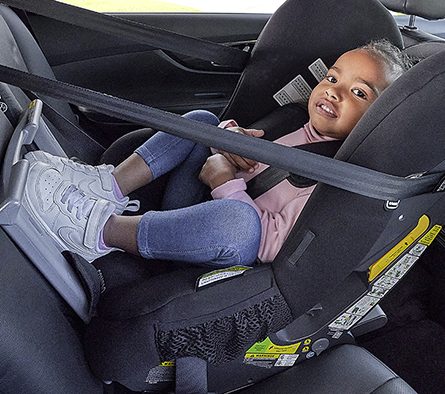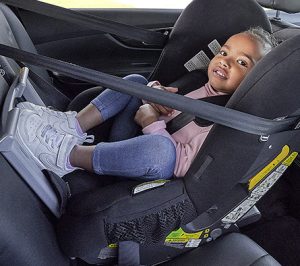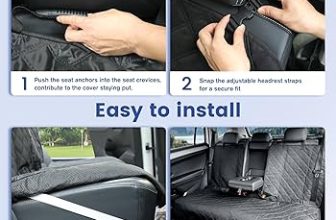How Long Can an Infant Be in a Car Seat? A Information for new parents.

When it comes to the safety and comfort of your baby, car seat use is one of the most important considerations for any parent. Whether you’re driving across town or taking a long road trip, understanding how long your infant can remain in a car seat is essential for their health and safety.
In this comprehensive news, we’ll explore the recommended time limits, risks of prolonged car seat use, expert guidelines, and practical tips to help you ensure your baby is safe and comfortable.
Why Car Seats Are Important
Car seats are designed to protect your baby in the event of a car crash. Rear-facing seats provide optimal support for an infant’s head, neck, and spine, helping reduce the risk of serious injury. They are legally required in most countries for children under a certain age or weight.
However, car seats are made for travel—not extended periods of staing.
General Recommendations: Time Limits
So, how long can an infant be in a car seat?
Most experts and pediatricians recommend no more than 2 hours at a time in a car seat. This applies whether the car seat is used in a vehicle, as part of a travel system, or as a carrier or rocker.
Key Guidelines:
- Infants under 4 weeks: No more than 30–60 minutes at a moment.
- General rule for infants up to 6 months: Stick to the 2-hour rule.
- Take frequent breaks on long travels.
- Always place your baby in a semi-reclined condition (as per manufacturer instructions).
The 2-Hour Rule Explained
The “2-hour rule” refers to the recommendation that babies should not sit in a car seat for longer than 2 hours within a 24-hour period without a break. This advice comes from health professionals concerned about infant posture and oxygen levels.
Why This Rule Exists:
- Babies have weak neck muscles and underdeveloped respiratory systems.
- Sitting too long in a semi-upright position can compress the chest, restricting breathing.
- Prolonged sitting can also lead to flat head syndrome (plagiocephaly) and reduced blood oxygen levels.
Risks of Keeping Infants in Car Seats Too Long
Parents might think their baby is safety in a car seat—even outside the car—but extended use can actually be harmful.
1. Breathing Issues
Research shows that some infants, especially newborns and premature babies, may experience oxygen desaturation after sitting in a car seat too long.
2. Positional Asphyxia
An infant’s head can fall forward in a car seat, blocking their airway. This condition, called positional asphyxia, is dangerous and potentially fatal.
3. Physical Discomfort and Spinal Stress
The curved position may place pressure on the spine and hips. For newborns, this is particularly problematic because their bones and joints are still developing.
4. Overheating
Car seats can trap heat, especially in warm weather. Babies can easily become overheated, which increases the risk of sudden infant death syndrome (SIDS).
Special Considerations for Newborns and Preemies
Newborns, particularly those born prematurely or with medical conditions, are at greater risk of complications from prolonged car seat use.
Important Tips& Tricks
- Limit trips to essential travel only for the first few weeks.
- Always monitor your baby closely during travel.
- Use an infant head support insert if approved by the manufacturer.
- Ask your hospital about a car seat challenge test before discharge (for preemies).
Expert Opinions and Research
Several studies and organizations provide guidance on this matter:
- American Academy of Pediatrics (AAP) recommends that babies should not sleep in car seats when not in a moving vehicle.
- A study published in Pediatrics found that babies younger than 6 weeks showed decreased oxygen saturation after being in a car seat for 60 minutes.
- UK researchers introduced the “2-hour rule” after tests showed infants slumped forward in car seats could suffer oxygen desaturation.
Traveling Long Distances: What to Know
Long drives are sometimes unavoidable—but planning is key. Here’s how to handle them:
Pre-Trip Checklist:
- Ensure the car seat is properly installed.
- Pack extra diapers, bottles, wipes, and clothing.
- Dress your baby in breathable layers.
- Have an adult sit next to the baby if possible.
On the Road:
- Stop every 1 to 2 hours for a break.
- Remove your baby from the car seat during stops.
- Offer feeding and diaper changes during breaks.
- Stretch your baby’s limbs and allow free movement.

When and How to Take Breaks
Stopping frequently helps your baby avoid stiffness, oxygen issues, and discomfort.
Recommended Break Frequency:
- For babies under 3 months: Every 30–60 minutes.
- For older infants: Every 90–120 minutes.
During breaks:
- Remove baby from the seat.
- Hold your baby upright or lay them on a flat surface for tummy time.
- Feed and change your baby as needed.
Using Car Seats Outside the Car
Car seats are often used as baby carriers, rockers, or part of a stroller system—but extended use outside the car is discouraged.
Why This Is a Concern:
- Babies often fall asleep in car seats.
- Parents may be tempted to leave them sleeping undisturbed.
- Prolonged sleeping in a car seat, especially outside of the car, has been linked to sleep-related deaths.
Safer Alternatives:
- Transfer baby to a crib or bassinet for naps.
- Use a baby swing or bouncer for short-term seating (always under supervision).
Alternatives to Overusing Car Seats
If you’re using the car seat as a general baby holder, consider safer alternatives:
- Baby carriers or wraps (allow skin-to-skin contact and promote bonding)
- Stroller with a fully flat recline for longer walks
- Bassinets and cribs for naps and sleep
- Floor play mats or tummy time blankets for active play
Safety Tips for Car Seat Use
To ensure your baby’s safety in a car seat, follow these tips:
Installation:
- Read the manual and check for recalls.
- Use the correct angle for infant seats (most have a recline indicator).
- Install the seat using LATCH or the seat belt, not both.
Positioning:
- Straps should be snug and lie flat.
- The chest clip should be at armpit level.
- Ensure the baby’s head is supported and not slumped forward.
Monitoring:
- Never leave a baby in a car seat unattended.
- Check frequently during travel.
- Avoid adding aftermarket products not approved by the manufacturer.
Frequently Asked Questions
Can my baby sleep in a car seat?
Yes, but only while the car is moving. Once the trip ends, transfer them to a flat surface for safe sleep.
What if my infant falls asleep on a long drive?
Stop the car safely when possible and check your baby’s position. If their head is slumped, gently reposition or remove them.
Can I use a car seat as a travel bed?
No. Car seats should never replace a crib, bassinet, or other flat sleep surface.
What’s the safest way to travel with a newborn?
Limit travel during the first few weeks, ensure proper car seat installation, and avoid unnecessary trips.
Conclusion
Understanding how long an infant can be in a car seat is vital for your baby’s well-being. While car seats are crucial for travel safety, overuse—especially for naps or extended periods—can pose serious risks.
The 2-hour rule is a practical guideline to help prevent breathing problems, spinal strain, and other health concerns. Always plan ahead, take breaks, and monitor your baby closely while on the road.
By following expert recommendations and staying attentive to your baby’s needs, you can travel save and comfortable—both for you and your little one.







